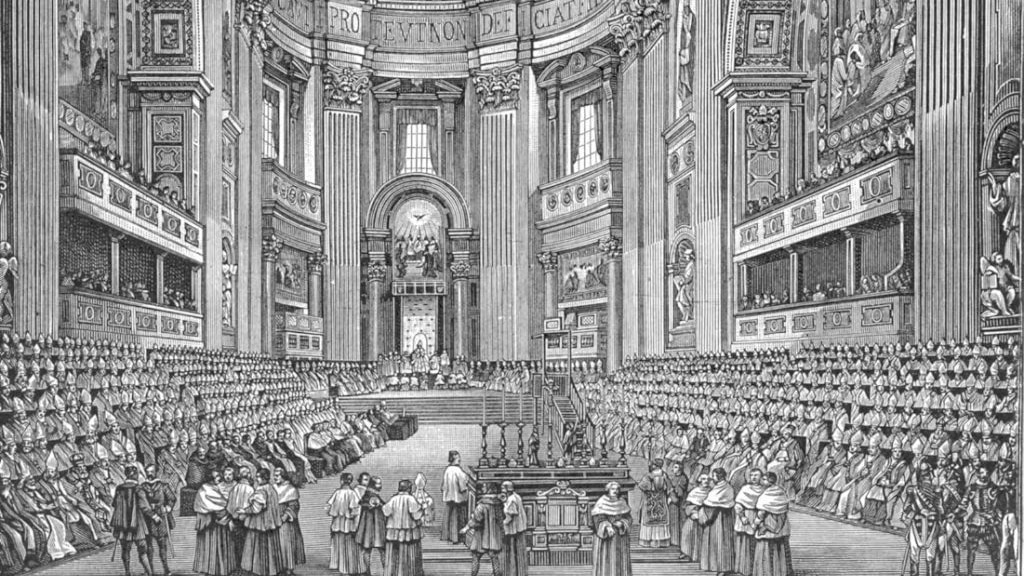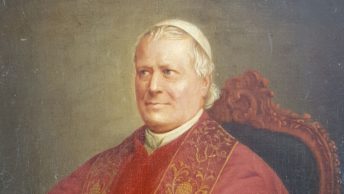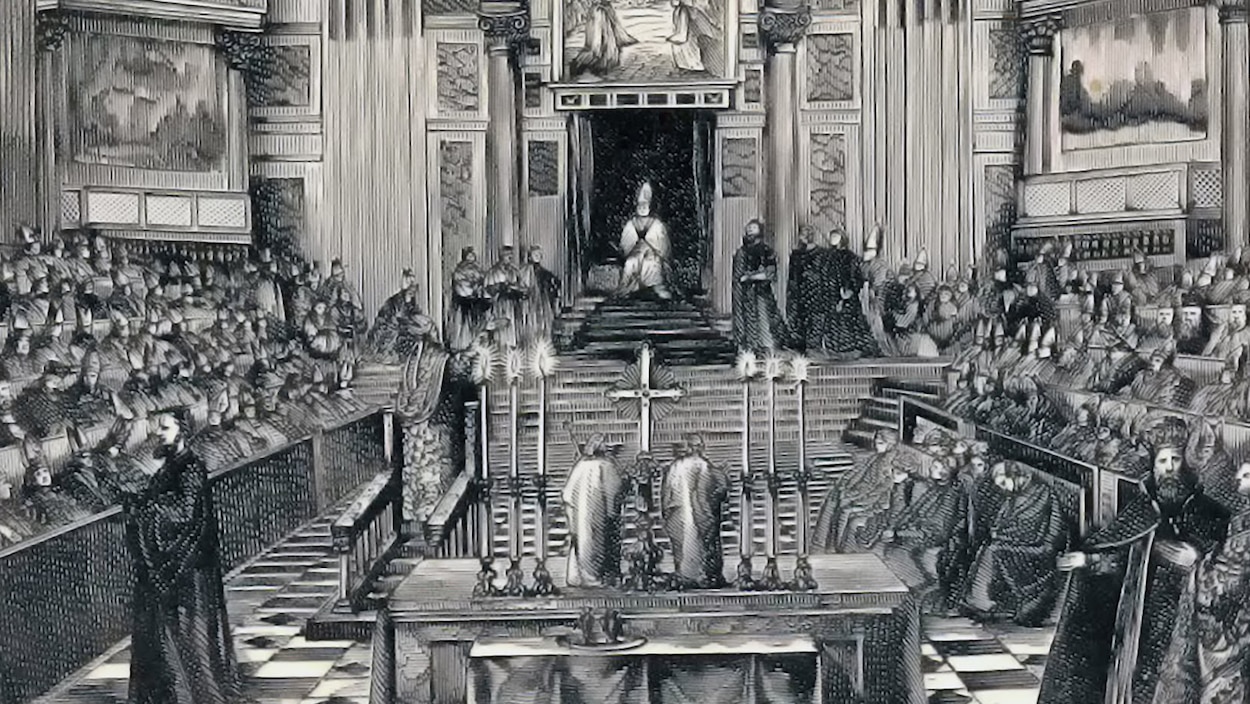The woman was confused about the Catholic doctrine of infallibility, so she wrote to a Catholic website for clarification. The answer she received may be summarized as follows: Doctrines are beliefs that Catholics must accept, and they include “solemnly defined” dogmas and “other teachings” that are “definitively proposed.” The latter kind are “no less certain” than the former, and “both are infallibly taught by the Church.” [Emphasis mine] The responder added that there is yet another kind of teaching, “authoritative,” and it should receive “religious obedience of intellect and will,” rather than “assent of faith.”
I don’t know whether this explanation reduced the woman’s confusion, but it definitely increased mine. I had understood infallibility to be less sweeping, less inclusive, and less ambiguous than the responder suggested. I also found the responder’s comment on intellectual obedience and “assent of faith” not only a distinction without much of a difference, but one that implied that theological inquiry itself might be inappropriate outside the Magisterium.
I wondered if I had been mistaken about the doctrine of infallibility, so I revisited the proceedings of the First Vatican Council to find out.
The Council met in four sessions from 1869 to 1870. The fourth session, First Dogmatic Constitution on the Church of Christ, set forth the teaching on infallibility. It consists of four chapters: “On the institution of the apostolic primacy in blessed Peter,” “On the permanence of the primacy of blessed Peter in the Roman pontiffs,” “On the power and character of the primacy of the Roman Pontiff,” and “On the infallible teaching authority of the Roman Pontiff.” Each chapter ends with a statement that those who disagree are anathema—that is, denounced and (possibly) excommunicated.
The following declarations in Chapter Four are central to the doctrine of infallibility. (What is not directly quoted is paraphrased.)
“Primacy of jurisdiction” was given by Jesus “to Peter alone” among the apostles, and this teaching is “absolutely manifest” by Scripture.
“Whoever succeeds to the chair of Peter obtains by the institution of Christ himself, the primacy of Peter over the whole Church” and enjoys “full and supreme power of jurisdiction over the whole Church, and this not only in matters of faith and morals, but also in those which concern the discipline and government of the Church dispersed throughout the whole world.”
“Faithfully adhering to the tradition received from the beginning of the Christian faith, to the glory of God our savior, for the exaltation of the Catholic religion and for the salvation of the Christian people, with the approval of the Sacred Council, we teach and define as a divinely revealed dogma that when the Roman Pontiff speaks EX CATHEDRA, that is, when, in the exercise of his office as shepherd and teacher of all Christians, in virtue of his supreme apostolic authority, he defines a doctrine concerning faith or morals to be held by the whole Church, he possesses, by the divine assistance promised to him in blessed Peter, that infallibility which the divine Redeemer willed his Church to enjoy in defining doctrine concerning faith or morals. Therefore, such definitions of the Roman Pontiff are of themselves, and not by the consent of the Church, irreformable. So then, should anyone, which God forbid, have the temerity to reject this definition of ours: let him be anathema.”
The previous paragraph was the final one in the proceedings of Vatican I. The capitalization is in the document, but the underlining is mine and indicates points I believe deserve special note. The phrase “Sacred Council” appears a number of times in the proceedings and evidently refers to the bishops gathered at the Council. Presumably, the approval was obtained before the final document was prepared.
It is noteworthy that infallibility is asserted only for the Pope’s ex cathedra statements (those made “from the chair of St. Peter”) and not those of other bishops singly or collectively. Also, that such statements do not require “the consent of the Church”; and once expressed, they cannot be changed.
Almost a century later, Pope Paul VI stated in Lumen Gentium that when ”by a definitive act [the Roman Pontiff] proclaims a doctrine of faith or morals . . . his definitions, of themselves, and not from the consent of the Church, are justly styled irreformable, since they are pronounced with the assistance of the Holy Spirit, promised to him in blessed Peter, and therefore they need no approval of others, nor do they allow an appeal to any other judgment.” He added that the bishops “do not enjoy the prerogative of infallibility.”
My careful reading of the proceedings of Vatican I (and Lumen Gentium) made clear that my understanding of the doctrine of infallibility was correct. That fact, however, meant that the author of the response at the Catholic website was mistaken. I was uncomfortable with that conclusion. “The man holds a degree in Sacred Theology” I thought, “so it is unlikely he would be so far off the mark.”
I wondered whether there might be more to consider about the doctrine of infallibility than what Vatican I established. Perhaps the doctrine, or at least the Church’s interpretation of it, had changed. That seemed unlikely, given the nature of the doctrine. Nevertheless, I explored that possibility.
In 1998 Pope John Paul II revised two Canons in the Profession of Faith to cover not only what the Magisterium teaches as “divinely revealed,” but also what is “definitively revealed,” a lesser category. Cardinal Ratzinger (later Pope Benedict XVI) then published a commentary supporting John Paul’s revision.
The Cardinal noted that the only ones possessing binding authority on the Church are “the Supreme Pontiff and the College of Bishops in communion with him.” But then he seemed to extend infallibility beyond the Pope when he wrote: “These doctrines are contained in the word of God, written or handed down, and defined with a solemn judgment as divinely revealed truths either by the Roman pontiff when he speaks “ex cathedra” or by the college of bishops gathered in council, or infallibly proposed for belief by the ordinary and universal Magisterium.” (Emphasis mine) Note that the sentence’s “either/or” structure has three actors—the Pope speaking ex cathedra, the bishops in council, and the “ordinary and universal Magisterium.” To complicate matters further, the definition of Magisterium includes Church Fathers who are “distinguished for their sanctity and their doctrine,” theologians, and even the laity.
The problem with the sentence shown in bold is that the words “or infallibly proposed for belief by the ordinary and universal Magisterium” can be understood in two very different ways—that the ordinary and universal Magisterium is doing the proposing, or instead that the ordinary and universal Magisterium is simply receiving what is proposed. Readers with unusual linguistic skills may be able to make an informed guess as to which of the two was intended, but the average person will not.
Another puzzling statement in the Cardinal’s commentary was this: “Moreover, I adhere [sic] with [the requirement of] religious submission of will and intellect to the teachings which either the Roman pontiff or the college of bishops enunciates when they exercise their authentic Magisterium, even if they do not intend to proclaim these teachings by a definitive act. To this paragraph belong all those teachings on faith and morals presented as true or at least as sure, even if they have not been defined with a solemn judgment or proposed as definitive by the ordinary and universal Magisterium. Such teachings …require religious submission of will and intellect….” (Emphasis his)
The problem with this passage is its specification that clergy or congregants must submit their wills and intellects to beliefs that are neither defined nor proposed as definitive. This leaves them without a sure way to distinguish between official pronouncements and hierarchical opinion.
As I pondered these findings, I realized that the website author who addressed the woman’s confusion about the doctrine of infallibility met the challenge as well as he, or anyone else, could.
I was also reminded of how complicated the doctrine of papal infallibility is, how thorny are its aspects, and how far reaching its implications. And I wondered about the intellectual and spiritual climate at the time of Vatican I, the theological differences of those in attendance, the various pressures they felt, the opposing arguments that filled the Council sessions, and the impact of those arguments on the outcome of the Council.
To be continued . . .
Copyright © 2018 by Vincent Ryan Ruggiero. All rights reserved







